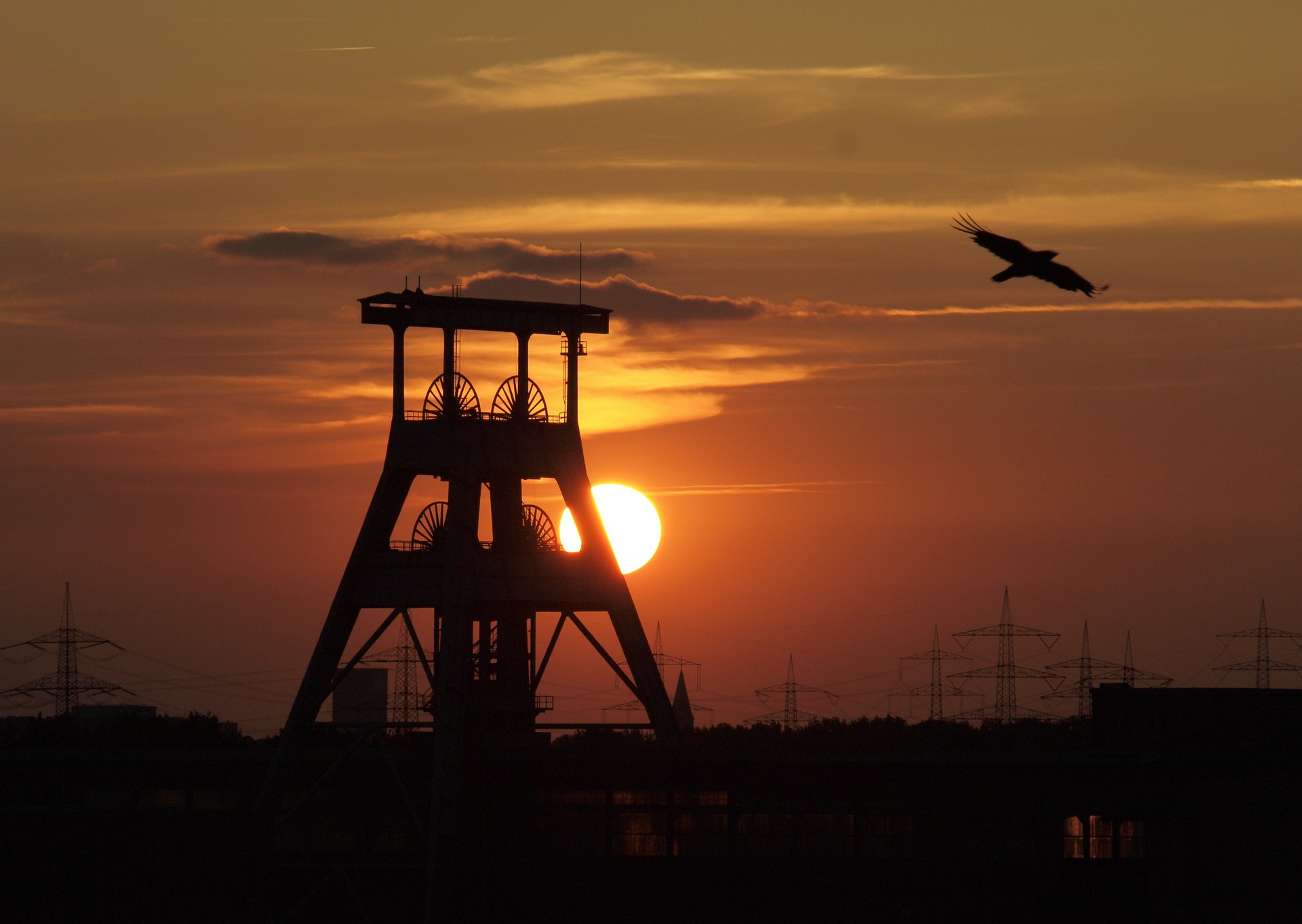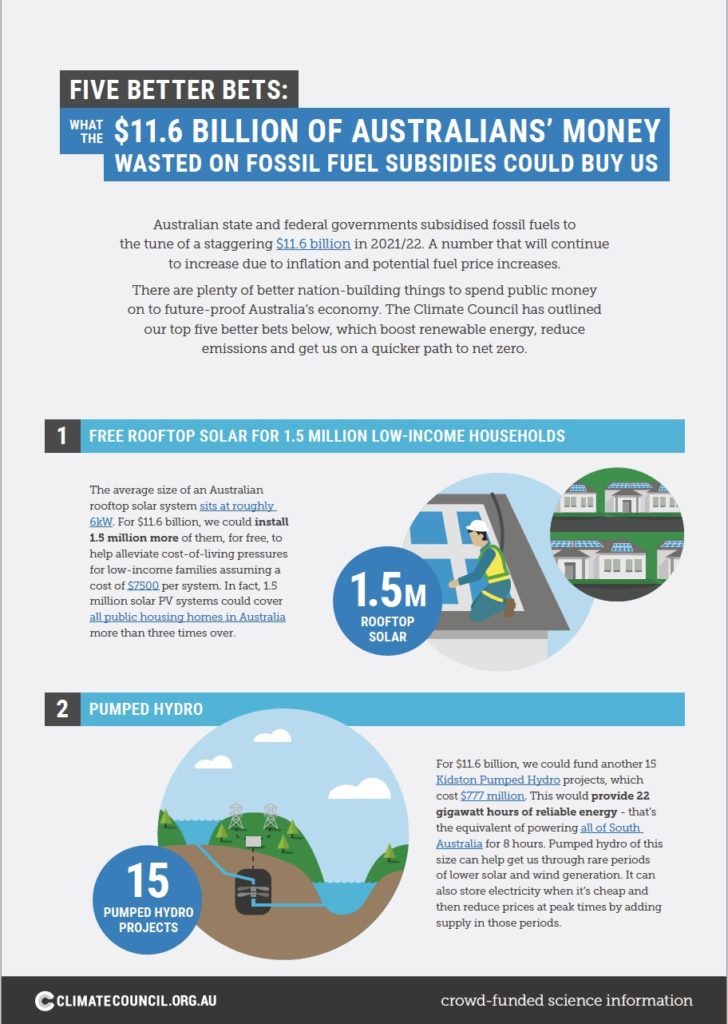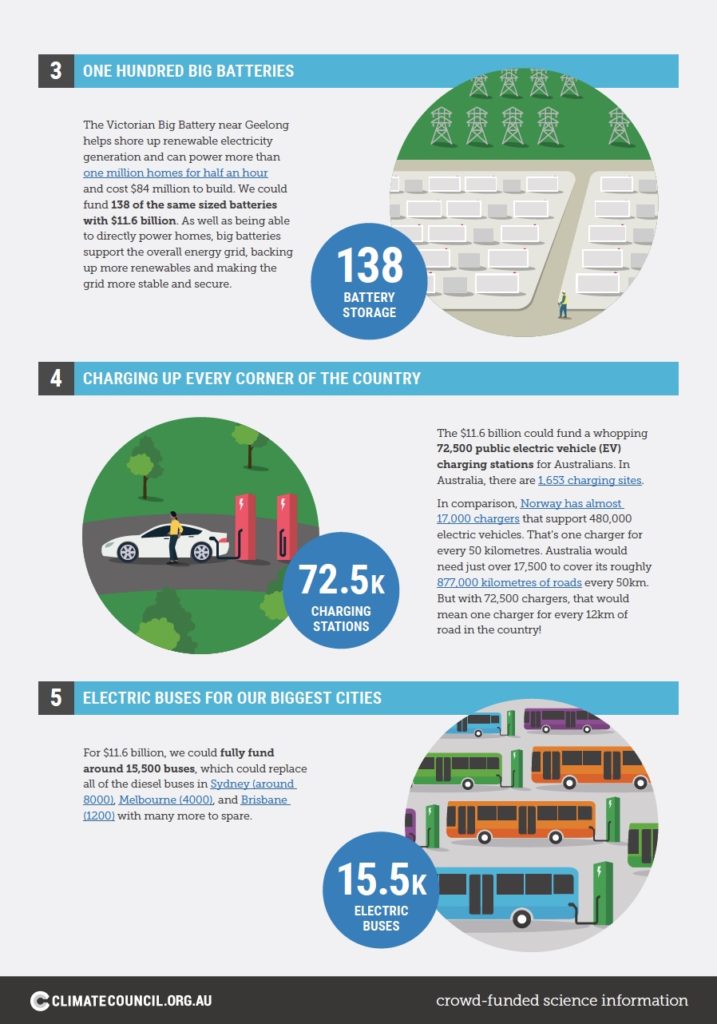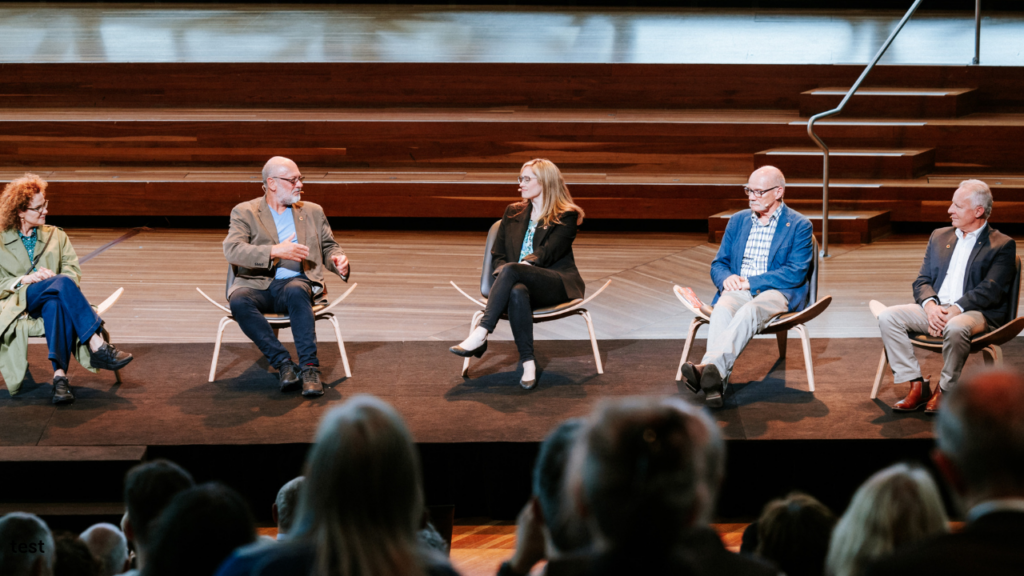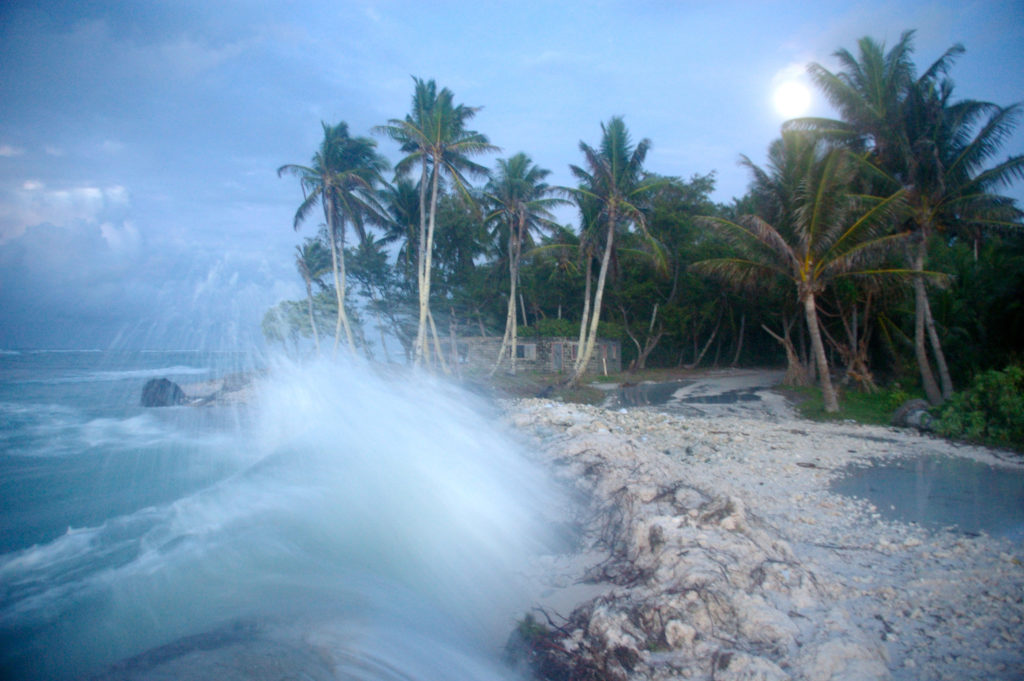Australian state and federal governments subsidised fossil fuels to the tune of a staggering $11.6 billion in 2021/22. A number that will continue to increase due to inflation and potential fuel price increases.
There are plenty of better nation-building things to spend public money on to future-proof Australia’s economy. The Climate Council has outlined our top five better bets below, which boost renewable energy, reduce emissions and get us on a quicker path to net zero.
1. Free rooftop solar for 1.5 million low-income households
The average size of an Australian rooftop solar system sits at roughly 6kW. For $11.6 billion, we could install 1.5 million more of them, for free, to help alleviate cost-of-living pressures for low-income families assuming a cost of $7500 per system. In fact, 1.5 million solar PV systems could cover all public housing homes in Australia more than three times over.
2. Pumped hydro
For $11.6 billion, we could fund another 15 Kidston Pumped Hydro projects, which cost $777 million. This would provide 22 gigawatt hours of reliable energy – that’s the equivalent of powering all of South Australia for 8 hours. Pumped hydro of this size can help get us through rare periods of lower solar and wind generation. It can also store electricity when it’s cheap and then reduce prices at peak times by adding supply in those periods.
3. One hundred big batteries
The Victorian Big Battery near Geelong helps shore up renewable electricity generation and can power more than one million homes for half an hour and cost $84 million to build. We could fund 138 of the same sized batteries with $11.6 billion. As well as being able to directly power homes, big batteries support the overall energy grid, backing up more renewables and making the grid more stable and secure.
4. Charging up every corner of the country
The $11.6 billion could fund a whopping 72,500 public electric vehicle (EV) charging stations for Australians. In Australia, there are 1,653 charging sites.
In comparison, Norway has almost 17,000 chargers that support 480,000 electric vehicles. That’s one charger for every 50 kilometres. Australia would need just over 17,500 to cover its roughly 877,000 kilometres of roads every 50km. But with 72,500 chargers, that would mean one charger for every 12km of road in the country.
5. Electric buses for our biggest cities
For $11.6 billion, we could fully fund around 15,500 buses, which could replace all of the diesel buses in Sydney (around 8000), Melbourne (4000), and Brisbane (1200) with many more to spare.

